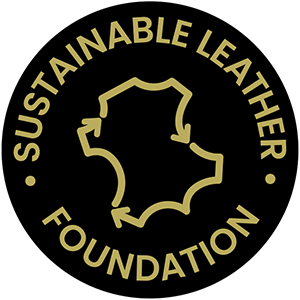How to make sutainability pay - S&V Magazine
Every month SLF writes an article for the S&V African Leather Magazine. For those who don’t subscribe, we will be publishing some of our most-read articles on the SLF website and social pages.
First up is an article that was featured in April this year about how to make sustainability pay. More articles will follow over the coming weeks including:
- A report on the conclusion of the year-long GIZ project
- Deforestation – the number one risk facing the industry right now
- Finding our industry voice
- Let’s talk about greenwashing
For anyone who would like to subscribe to S&V African Leather Magazine, the link is here:
https://www.svmag.co.za/publicationpage/102/SV_African_Leather_Magazine
In our modern business landscape, sustainability is no longer just a buzzword; it is a fundamental aspect of corporate responsibility and long-term viability. However, many companies in the leather value chain still struggle to reconcile the seemingly conflicting goals of profitability and sustainability. The consistent misconception is that investing in sustainability comes at the expense of the bottom line. Yet, this perception is outdated and can hamper a business in today’s climate. Increasingly, organisations are discovering that integrating sustainable practices can lead to cost savings, increased revenue, better staff retention and enhanced brand reputation. Here’s SLF’s 8-point guide on how to make sustainability pay:

1. Cost Reduction through Efficiency Measures: One of the most straightforward ways to make sustainability profitable is by reducing operational costs through efficiency measures. This can include optimizing energy usage, minimising production materials such as chemicals, minimising waste generation, and streamlining production processes. By investing in energy-efficient equipment, implementing recycling programmes, and adopting lean manufacturing principles, companies can significantly cut down on expenses while simultaneously reducing their environmental footprint. Additionally, when employees see the organisation’s commitment to sustainability, it can enhance their satisfaction and loyalty, leading to better staff retention rates and breed a culture of positive improvement.
2. Innovation and Product Development: By embracing sustainability as a concept, the organisation will be more open to considering innovation and product development to further provide efficiency and profitability. We know that consumers are increasingly conscious of the environmental and social impacts of the products they purchase and by creating sustainable alternatives or incorporating eco-friendly features into existing products, businesses can meet the growing market demand. This not only opens up new revenue streams but also strengthens brand loyalty and enhances competitiveness in the market. Internally, by engaging employees in sustainability-driven innovation projects organisation will see a boost in staff morale and job satisfaction, often unlocking greater potential for development and leading to higher retention rates.
3. Supply Chain Optimization: A substantial portion of a company’s environmental impact often lies within its extended supply chain. By working closely with suppliers to improve sustainability standards and practices collectively, organisations can mitigate risks associated with resource scarcity, regulatory changes, and reputational damage. Implementing sustainable sourcing strategies not only supports a reduction of environmental footprint but also enhances supply chain resilience and fosters long-term partnerships. This will also support stability of costs and revenue, alongside the added benefit of long term relationship building with employees who feel connected to the company’s mission of sustainability.
4. Brand Enhancement and Consumer Engagement: Sustainability initiatives provide an opportunity for businesses to connect with customers on a deeper level. By transparently communicating their commitment to sustainability and the positive impacts of their efforts, organisations can build trust and loyalty among environmentally conscious consumers. Moreover, engaging customers through sustainability-focused marketing campaigns and initiatives can create a competitive advantage and drive sales growth. An often overlooked benefit of a committed workforce is that employees who are proud to be associated with a socially responsible company are more likely to remain with the organisation and will market it by association and word of mouth.
5. Risk Mitigation and Long-Term Resilience: Climate change, resource scarcity, and increasing regulatory pressures pose significant risks to businesses in the medium and long term. By proactively addressing these challenges through sustainable practices, organisations can mitigate risks, adapt to changing market dynamics, and ensure long-term resilience. Investing in sustainability not only future-proofs the business but also enhances its reputation as a responsible corporate citizen, which can attract investors and mitigate regulatory risks. A stable workforce that feels secure in their company’s ability to weather environmental and social challenges are more likely to stay committed to their roles and the organisation.
6. Access to Capital and Investment Opportunities: Investors are increasingly considering environmental, social, and governance (ESG) factors when making investment decisions. Companies with strong sustainability performance are more likely to attract investment capital and access more favourable financing terms. By integrating sustainability into their business strategy and reporting practices, organisations can unlock opportunities for raising capital, improving credit ratings, and reducing the cost of capital.
7. Regulatory Compliance and Cost Avoidance: As governments around the world implement stricter environmental regulations, non-compliance can result in significant financial penalties and reputational damage. By proactively adhering to environmental regulations and adopting sustainable practices, organisations can avoid costly compliance issues and associated fines, and reduce the risk of customers sourcing from other suppliers that do meet compliance. Furthermore, by staying ahead of regulatory trends, companies can position themselves as industry leaders and gain a competitive advantage.
8. Staff Retention and Development: A crucial positive aspect of making sustainability pay is its impact on staff retention and development. Employees, particularly millennials and Gen Z, are increasingly seeking purpose-driven work environments. Companies that prioritise sustainability demonstrate a commitment to values beyond profit, fostering a sense of purpose and fulfilment among employees. Additionally, sustainability initiatives often promote collaboration, employee engagement, and personal development, which can contribute to higher job satisfaction and lower turnover rates. By investing in sustainability and creating a positive work environment, companies can retain top talent and reduce recruitment and training costs associated with high turnover rates.
Since 2020, Sustainable Leather Foundation has been helping organisations in the leather value chain to understand where they can make sustainable improvement that supports the above and tangible results have been achieved by facilities that have embraced the necessary mindset to proactively become more sustainable. We are not just concerned with the environment; we are also working on social and governance improvement to benefit from a triple pillar approach to futureproofing our industry.
SLF provides a technical library, a toolkit, pathway papers and all the support needed to successfully prepare for an ESG audit. Making sustainability pay is not only achievable but increasingly essential for long-term success. By adopting sustainable practices, organisations can unlock cost savings, drive innovation, enhance brand reputation, and mitigate risks. Embracing sustainability is not just a moral imperative, it is a strategic business decision that can lead to increased profitability and resilience in an ever-changing market landscape. As businesses navigate the complexities of growing consumer expectations, integrating sustainability into their core operations is a prerequisite for sustainable growth and prosperity.
Can you afford not to embrace sustainability?
If you would like more information about how SLF can support you through our partnership routes, then please contact: info@sustainableleatherfoundation.com.
